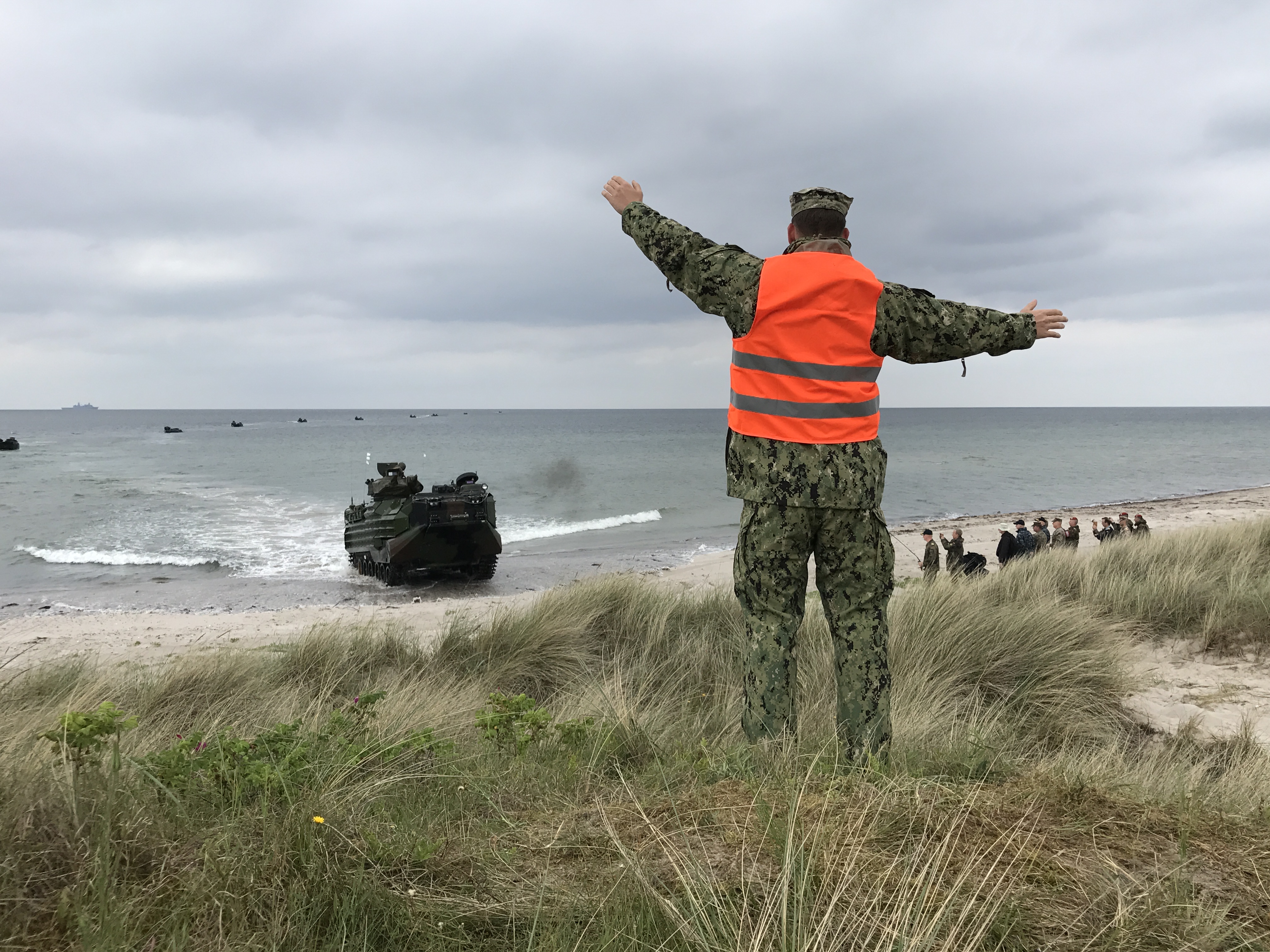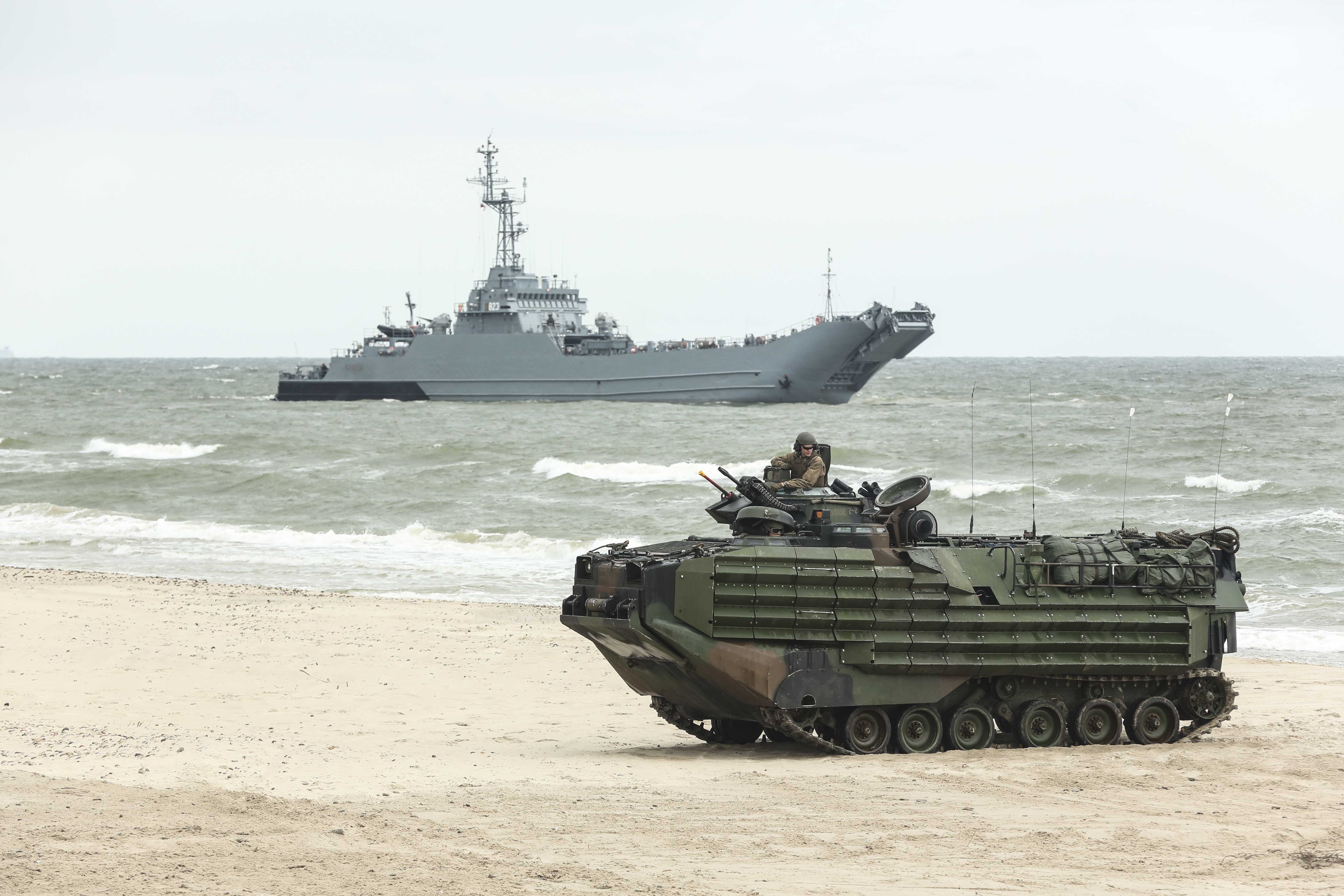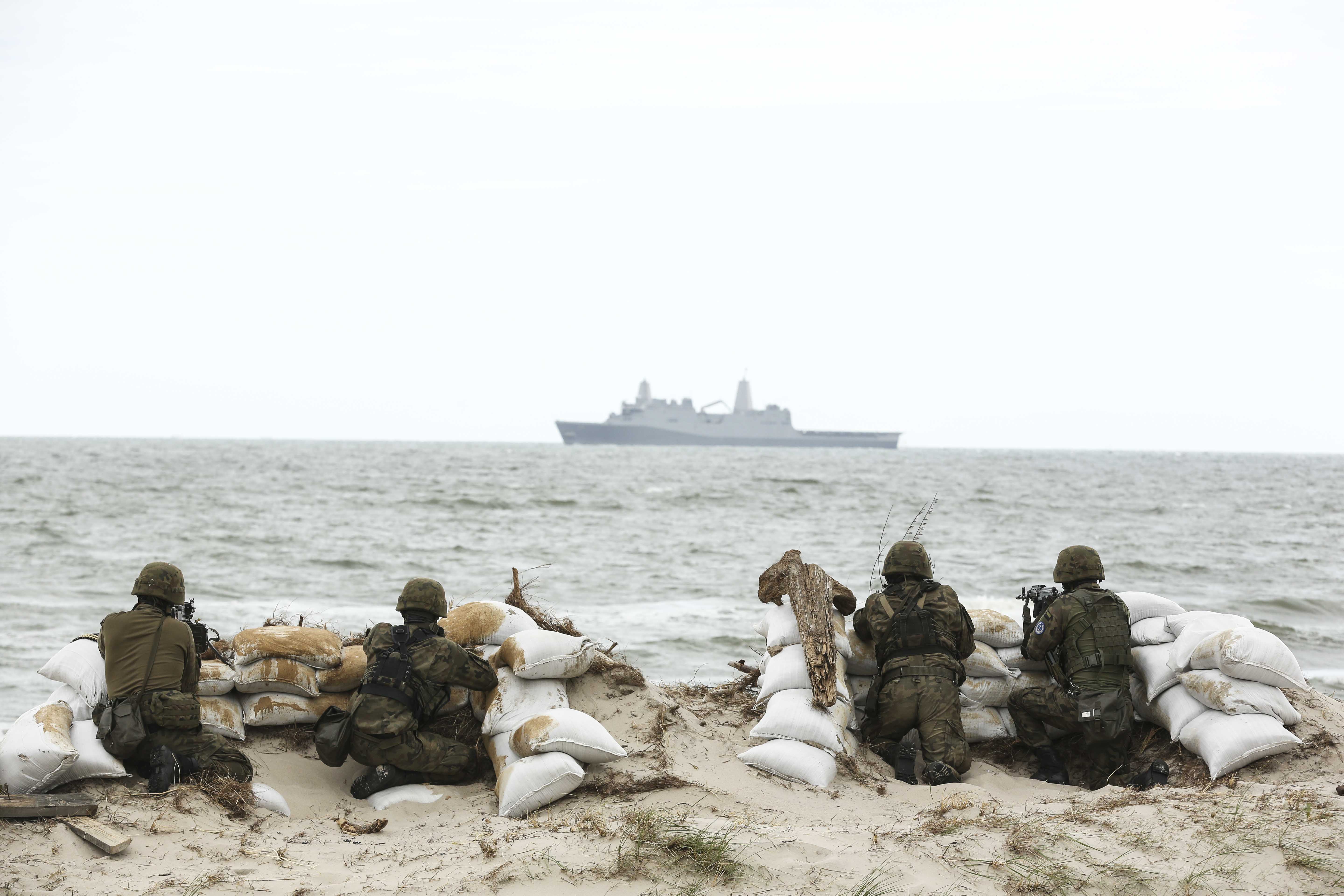
ABOARD AMPHIBIOUS WARSHIP USS ARLINGTON — BALTOPS 2017, now in its 45th year as an annual naval exercise, took place during the first two weeks of June in a Baltic Sea region that continues to be tense with Russia’s continued assertiveness, which became apparent with the violent annexation of Crimea from Ukraine in 2014.
Some fifty ships and fifty aircraft, along with 4,000 personnel from, among others, the United States, the United Kingdom, Germany, the Netherlands, Denmark, Norway, and Estonia participated in the exercise that has shifted focus over the last few years towards preparing for high-end warfighting. And BALTOPS is not about a theoretical threat, but a rejuvenated Russian navy that is increasingly active and capable in the Baltic Sea, the North Atlantic, and the Black Sea, with activities ranging from stepped up submarine patrols to deployments to the Mediterranean where Russian surface ships and submarines have fired cruise missiles against targets ashore in Syria.
The growing Russian challenge at sea caused the then-commander of the US Sixth Fleet, Vice Adm. James Foggo, to pen a widely read article with the title “The Fourth Battle of the Atlantic” in 2016. To boot, in the Baltic Sea one is never too far from the coast, meaning that Russia’s land-based anti-ship missiles can target much of the regional maritime domain.

The two-week exercise included a week of phased training and rehearsals on crucial elements of naval and amphibious warfighting, including mine hunting, air defense, anti-submarine warfare, and beach landings; all elements required for NATO to be able to fight through the anti-access/area-denial network that Russia is building in its Kaliningrad enclave in the southeast corner of the Baltic Sea and gain access across the sea to NATO’s Baltic members, arguably the geographically most exposed members of the Alliance.
The second week of BALTOPS saw free play in a game scenario intended to simulate potential contingencies in the region sometime in the future.
Along with national contributions to BALTOPS the exercise also saw the participation of Standing NATO Maritime Group One (SNMG1), currently consisting of frigates and destroyers from Norway, Denmark, the Netherlands and Canada, along with the Standing NATO Mine Countermeasures Group One (SNMCMG1).

USTKA, Poland (June 14, 2017) Polish sailors participate in an amphibious landing demonstration during exercise BALTOPS 2017. The premier annual maritime-focused exercise is conducted in the Baltic region and is one of the largest exercises in Northern Europe. (U.S. Navy photo by Chief Mass Communication Specialist America A. Henry/Released)
Both formations have led quiet existences during the post-Cold War era, and NATO has at times struggled to fully fill the maritime groups with rotational contributions from the allies. And while SNMG1 was originally intended to operate in Europe’s northern waters, it has been used for counter-piracy missions off the Horn of Africa and for presence in the Red Sea and around the coasts of Africa. Now, however, SNMG1 and SNMCMG1 are both back in northern waters, and with seemingly more allies willing to contribute ships and personnel to participate in the groups.
To reorient NATO’s member navies back to high-end warfighting is no easy task, and will require reinvestment in capabilities, a change of mindset, and more exercises like BALTOPS that get increasingly more sophisticated during each iteration. BALTOPS 2017 specifically focused on the integration between maritime forces and air power, which included a B-52 and a B-1 along with Polish F-16s. This year, the majority of the BALTOPS exercise was also geographically focused in the southern Baltic Sea, with much of the naval action off the coast of Germany, and with amphibious landings in Poland and Latvia.
BALTOPS forms part of a broader effort to bolster NATO’s ability to provide defense and deterrence at sea. Shortly after BALTOPS concluded the action moved to the North Atlantic off the coast of Iceland, where NATO member forces trained for anti-submarine warfare with ships, submarines, and maritime patrol aircraft in the exercise Dynamic Mongoose, with several of the ships that participated in BALTOPS present.

In mid-July NATO navies will kick off the exercise Sea Breeze 2017 in the Black Sea, which also will include ships from the Ukrainian navy. And beyond stepped up exercises such as BALTOPS, NATO is also considering its future role in the maritime domain at the strategic level. After much resistance within the Alliance there now seems to be movement towards a rewrite of the Alliance Maritime Strategy, first rolled out in 2011 in a very different security environment.
There are also active discussions about bringing back NATO’s Atlantic Command; a maritime command structure disbanded after the end of the Cold War, but once again relevant in order for NATO to be able to better command and control operations in the broader North Atlantic and facilitate reinforcements from the United States to Europe across the sea. BALTOPS will return to the Baltic Sea next summer, for another turn of the wheel towards preparing NATO’s navies for a fight in tight quarters.





